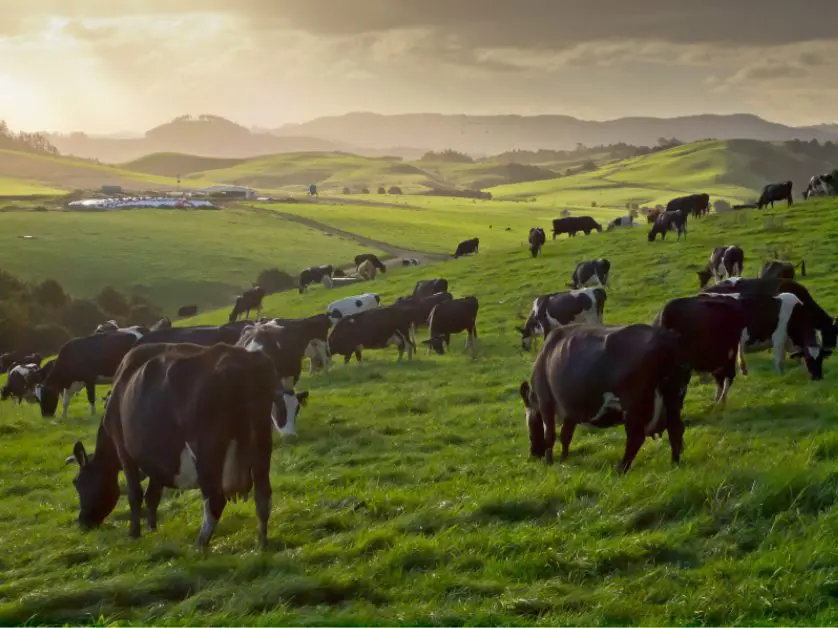Anyone who has been to a mall or department store in recent years can hardly deny the popularization of vegan leather. From brands like Matt & Nat, which has made a name for itself in this growing industry, to Call It Spring, which has joined the trend by transitioning its products to vegan leather altogether. Vegan leather is everywhere. Popularized by an increase in a plant-based or vegan lifestyle, the synthetic – or vegan – leather industry is forecasted to be worth over $40.9 billion by 2027. Vegan leather offers consumers the option to support animal welfare and sustainability, without compromising on style, and all at an affordable price. But what are the various kinds of synthetic leathers really made of? And are they really more sustainable than the traditional leather alternative? To answer these questions, we must first explore the environmental impacts of traditional leather.
Environmental criticism of the leather industry mostly relates to the impacts of animal agriculture, as well as the chemical tanning process involved in textile production.
Animal Agriculture

More and more people are becoming aware of the harmful effects of livestock, specifically the bovine industry. A single cow can produce between 250 to 500 litres of methane each day, which largely contributes to greenhouse gas effects. It is estimated that the livestock industry is responsible for 35-40% of methane emissions worldwide.
As well as contributing to the greenhouse gas effect, animal agriculture requires large areas to be cleared and deforested to create pastures and the farming lands required to feed these animals. Currently, over 40% of harvested crops in the world are used to feed livestock. In addition to causing habitat loss and mass extinctions of species, losing forests like the Amazon means losing large carbon sinks. It is estimated that the Amazon forest stores 80 to 120 billion tonnes of carbon. If destroyed, the carbon released from the Amazon would be equivalent to fifty times the annual greenhouse gas emissions produced by the United States. In 2009, the cattle sector in the Amazon forest was responsible for 14% of the world’s annual deforestation.
Lastly, the livestock industry is notorious for its water consumption and waste. The amount of water consumed by private residences in the U.S. is approximately 5% of total consumption, whereas the amount of water consumed by animal agriculture is approximately 55%.
Leather Tanning

Water consumption is also an important component of the leather tanning process. Tanning is the process by which the animal hide is chemically treated to alter the texture of the skin and make it more durable, effectively turning it into the product that we know as leather. The conventional tanning process uses between 1,500 and 2,000 litres of water per hide, depending on its size.
More notably, the products used in the tanning process, including chromium salts, phenolics, tannins and more, are known for producing high volumes of pollution through chemical run-offs. More often than not, the leather tanning industry is prominent in developing countries like Bangladesh, where governments do not regulate water pollution. Bangladesh has a large leather tanning industry with 113 tanneries which cumulatively produce 5,283,441 gallons of tannery effluent every day. This is equivalent to eight times the volume of an Olympic size swimming pool. These pollutants not only affect local agricultural activities and degrade the groundwater in the vicinity, but also have extremely harmful effects on human health.
This brief description of the leather industry does not even begin to cover the impact and significance of its environmental impacts. It does however allow us to understand how the need and demand for a vegan leather market came about, both for social and environmental reasons.
Currently, vegan leather refers to any alternatively produced, leather-like material that does not resort to the use of animal products. That being said, there are many ways that vegan leather can be produced and even more that are still being developed – with that in mind, they cannot all be covered in this article. The three types of material used to create vegan leather which will be the focus of this article are plastic-coated fabrics, plant-based materials and recycled materials.
Plastic-Coated Fabrics

These are perhaps the most widely known and common of the vegan leathers available on the market today. These are what we would have referred to in the past as “faux leather”. That term has now been rebranded and marketed as “vegan leather”. Although plastic-coated fabrics are by definition vegan, they are not necessarily a more sustainable choice. The two most common plastic-coated fabrics used in the production of vegan leather are polyurethane, or PU, and polyvinyl chloride, or PVC. According to Greenpeace, “PVC is the most environmentally damaging plastic. The PVC lifecycle — its production, use and disposal — results in the release of toxic, chlorine-based chemicals. These toxins are building up in the water, air and food chain”. There is no safe way to recycle or properly dispose of PVC. Polyurethane on the other hand, is still harmful in terms of its production process, but can be recycled. It does however have a shorter shelf life than genuine leather and PVC leather.
Plant-Based Materials
Many companies are now finding innovative ways to offer a beautiful vegan leather product that does not resort to the use of plastic-based products like PVC or PU leather. Brands like Piñatex, Desserto and Mylo are creating leather from pineapple leaves, cactus and mushrooms, respectively. The sustainability sections of these companies’ websites detail their specific commitments to protecting the planet and how their individual products are an improvement over genuine leather.
Recycled Materials
Plastic bottles, cork and rubber are only a few examples of materials that can be recycled and made into leather-like materials. This strategy is an effective way of giving new life to materials that would otherwise be wasted and sent to landfills. The social and environmental impacts are very specific to each material and its associated manufacturing process.
This category can also include the recycling of genuine leather products into new ones. Although genuine leather is far from being the most sustainable alternative, it is currently a large market that creates a lot of waste. Scraps are often thrown away but companies like RecycLeather are giving them a new life and in doing so, are preventing leather waste from ending up in landfills.
Greenwashing
Although companies may have shifted their marketing strategy to have a more sustainable focus, their supply chains may not have made the same adjustment. Putting a new name and branding on plastic-coated faux leather products does not make it any more sustainable than that which it is attempting to replicate. With this in mind, veganism and sustainability are not mutually inclusive.
There is no one size fits all answer to the question of whether vegan leather is more or less sustainable than traditional leather. There are trade-offs between all of the options because at the end of the day, scaling a product to make it widely available to the market remains an unsustainable feat. It is therefore up to the individual consumer to determine what is best for them, and most importantly, how to best care for what you own in order to prolong its life. This is where we come in. We created the 7R’s of fashion, which of course includes the eighth implied R: Research. Always do your research on a brand’s sustainable practices before you buy, make sure to prioritize quality, and make the most informed choice possible with the information you have. There is no one way to be sustainable, but reflecting on your impact and asking questions before you buy means you’ll be investing in both a company that you believe in, and an item that you can wear with pride and peace of mind for years to come.
And it’s important to keep in mind that even vegan products have an expiration date and will one day need an end-of-life strategy. Can they be Repurposed, Recycled or Reused? Or will they be thrown into landfills where they will contribute to greenhouse gas emissions, and leach chemicals and/or micro-plastics into the environment? Although studies have shown that vegan leather is more sustainable than its traditional counterpart, we must remember that just because a product is vegan does not justify overconsumption. Too often have we fallen prey to impulse buying due to the latest Instagram trend, discount culture or marketing tactics. Reducing our fashion consumption as much as possible is the most sustainable way to be fashionable, and the only way to do so is to invest in quality pieces that we can love and care for for years to come.

